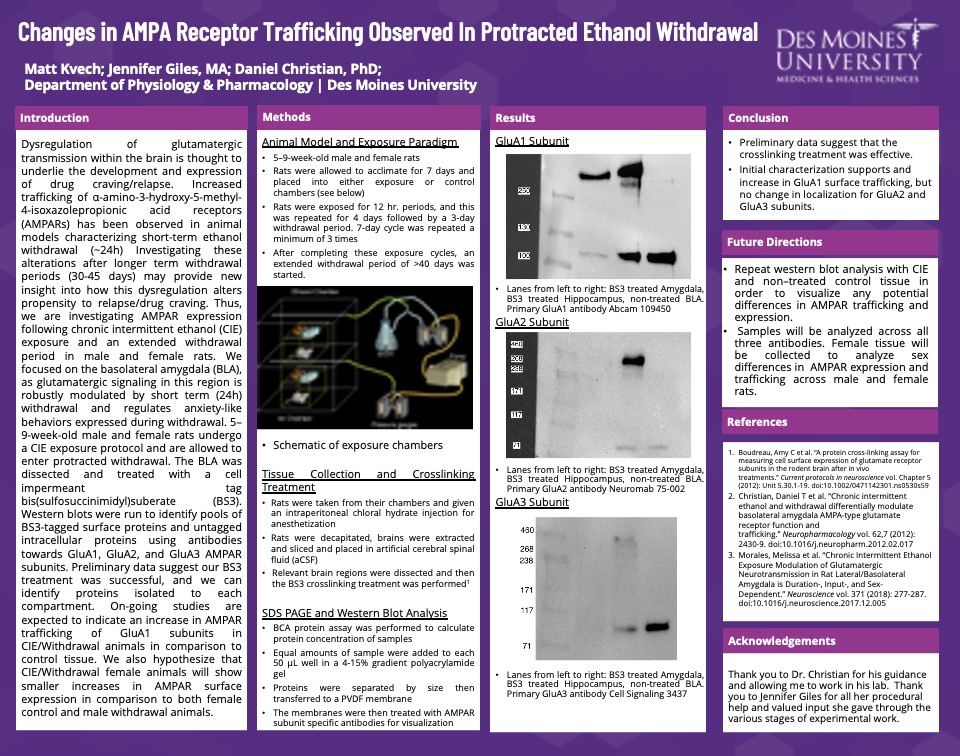
POSTER ABSTRACTS
Materials should NOT be shared with those that are not registered for the conference. Poster abstracts are not proofed for spelling and/or grammar errors.
The poster and/or other information contained on this website may NOT be downloaded and/or used without prior written permission from all authors on the project. If you would like to be connected with the author(s), please email [email protected].
Changes in AMPA receptor trafficking in protracted ethanol withdrawal
Matthew Kvech, Jennifer Giles, and Daniel T. Christian, PhD, MS
Department of Physiology and Pharmacology, Des Moines University, Des Moines, IA
Abstract
Dysregulation of glutamatergic transmission within the brain is thought to underlie the development and expression of drug craving/relapse. Increased trafficking of α-amino-3-hydroxy-5-methyl-4-isoxazolepropionic acid receptors (AMPARs) has been observed in animal models characterizing short-term ethanol withdrawal (~24h) Investigating these alterations after longer term withdrawal periods (30-45 days) may provide new insight into how this dysregulation alters propensity to relapse/drug craving. Thus, we are investigating AMPAR expression following chronic intermittent ethanol (CIE) exposure and an extended withdrawal period in male and female rats. We focused on the basolateral amygdala (BLA), as glutamatergic signaling in this region is robustly modulated by short term (24h) withdrawal and regulates anxiety-like behaviors expressed during withdrawal. 5–9-week-old male and female rats undergo a CIE exposure protocol (12hr/day, 4d on/3d off, 3 cycles) and are allowed to enter protracted withdrawal (>40days). The BLA was dissected and treated with a cell impermeant tag bis(sulfosuccinimidyl)suberate (BS3). Western blots were run to identify pools of BS3-tagged surface proteins and untagged intracellular proteins using antibodies towards GluA1, GluA2, and GluA3 AMPAR subunits. Preliminary data suggest our BS3 treatment was successful and we are able to identify proteins isolated to each compartment. On-going studies are expected to indicate an increase in AMPAR trafficking of GluA1 subunits in CIE/Withdrawal animals in comparison to control tissue. We also hypothesize that CIE/Withdrawal female animals will show smaller increases in AMPAR surface expression in comparison to both female control and male withdrawal animals.
Access PDF version to expand view.

